Invasive Plant Species In Bowker Creek
by OB NIn this project I want to explore some of the invasive plant species in the Bowker Creek environment, and how they were first brought into the environment after the restoration of the creek.

1In 1 playlists
By OB N
The Invasive plant shown in this project were selected randomly. Something that I noticed when I was doing this project was that out of the plants I selected, three were of the Family Asteraceae; the Dandelions, the Spear Thistle, and the Common Yarrow. Two of the plants were of the Family Fabaceae; the Red Clover, and the White Clover. The Bowker creek environment must be quite well suited to these types of plants.
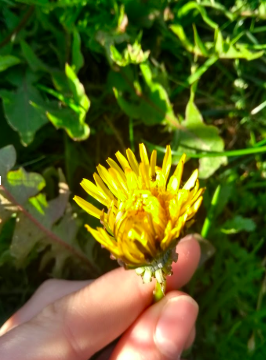
1In 1 playlists
By OB N
Common Name: Dandelion
Scientific Name: Taraxacum
Family: Asteraceae
- Dandelions produce small seeds that are attached to feathery bristles and use wind to help disperse the seeds.
- The most likely source of the dandelions at Bowker Creek would be from neighboring fields or gardens.
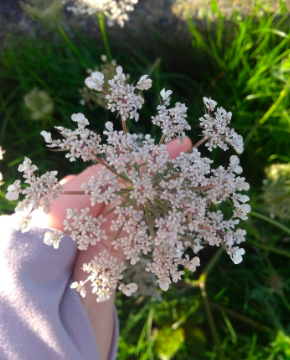
1In 1 playlists
By OB N
Common Name: Cow Parsley
Scientific Name: Anthriscus sylvestris
Family: Apiaceae
- Cow parsley produce flowers, which in turn produces seeds. The seeds have no obvious means of transportation. Generally seeds are found only a few meters away from the plant.
- It seems most likely that some Cow Parsley seeds or deep roots were left in the soil after the restoration. The plants could have grown from these.
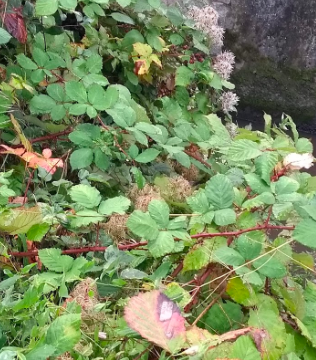
1In 1 playlists
By OB N
Common Name: Blackberry
Scientific Name: Rubus
Family: Rosaceae
- Blackberrys have two ways that they spread. They can produce runners, which will form new roots and become a new plant, or Blackberry fruits also produce seeds, which when eaten will go through the digestive system of the animal and be excreted in a new location.
- It is equally likely that the blackberry seeds were excreted by an animal as it is that pieces of root were left there after the restoration.
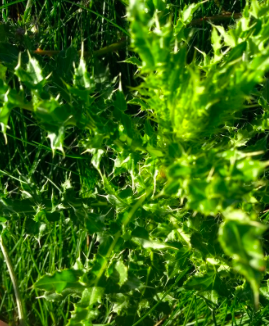
1In 1 playlists
By OB N
Common Name: Spear Thistle
Scientific Name: Cirsium vulgare
Family: Asteraceae
- The Spear Thistle uses seeds to reproduce, and uses the wind to distribute the seeds.
- The Spear Thistle at Bowker creek was probably brought on the wind from nearby parks or gardens.
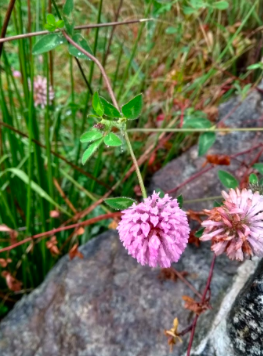
1In 1 playlists
By OB N
Common Name: Red Clover
Scientific Name: Trifolium pratense
Family: Fabaceae
- Red clover has two types of reproduction, it can produce runners, or it can also produce seeds.
- The clover seeds were probably left in the poop of some animal, or planted along with the non-native grass nearby.
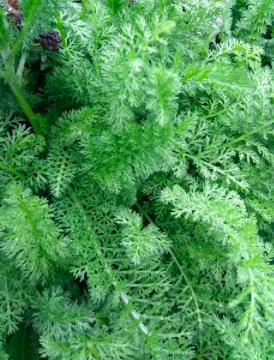
1In 1 playlists
By OB N
Common Name: Common yarrow
Scientific Name: Achillea millefolium
Family: Asteraceae
- The Common Yarrow uses seeds to reproduce, but it also can sprout from underground horizontal stems known as rhizomes.
- Some roots could have been left in the ground after the restoration, or some seeds could have arrived in the environment any number of ways

1In 1 playlists
By OB N
Common Name: Lemongrass
Scientific Name: Cymbopogon citratus
Family: Poaceae
- Lemongrass reproduces by seed but rarely flowers.
- Lemongrass is often used as a decorational plant and probably came from a nearby garden.
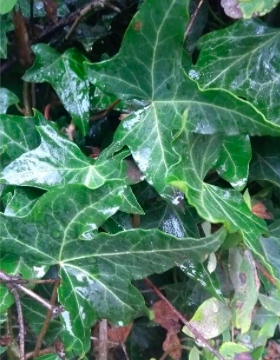
1In 1 playlists
By OB N
Common Name: English Ivy
Scientific Name: Hedera Helix
Family: Araliaceae
- Vegetative reproduction of Ivy can come from young stems that are touching the ground. The ivy’s fruit and seeds can be eaten and spread by birds.
- The seeds from the Ivy were probably pooped out by birds, and the Ivy would have grown from those seeds.

By OB N
Common Name: White clover
Scientific Name: Trifolium Repens
Family: Fabaceae
- White clover has two types of reproduction, it can produce runners, or it can also produce seeds which are encased in hard shells that can be broken down by going through an animal’s intestinal system.
- The clover seeds were probably left in the poop of some animal, or planted along with the non-native grass nearby.

By OB N
Even though we often try to get rid of non-native plants, not all of them are necessarily bad for the environment. Clover, though non-native, puts nutrients back into the soil. That brings up the question; should we really be removing all non-native plants? Are all non-native plants invasive? Can native plants be invasive? There is no definite answer. It all depends on what we want to see in the environment.
